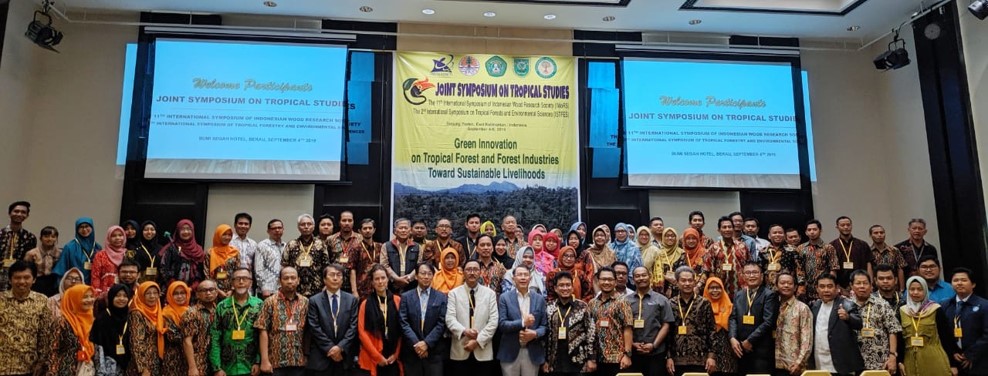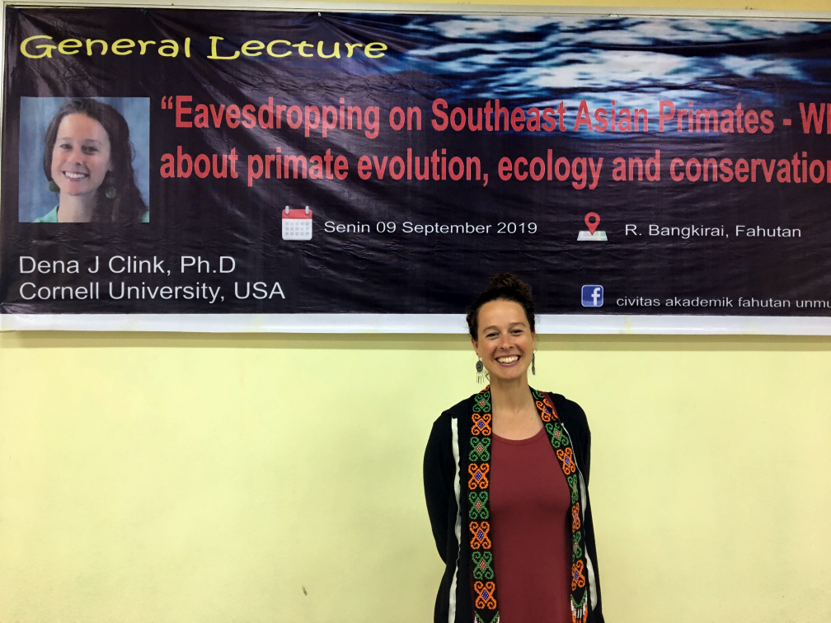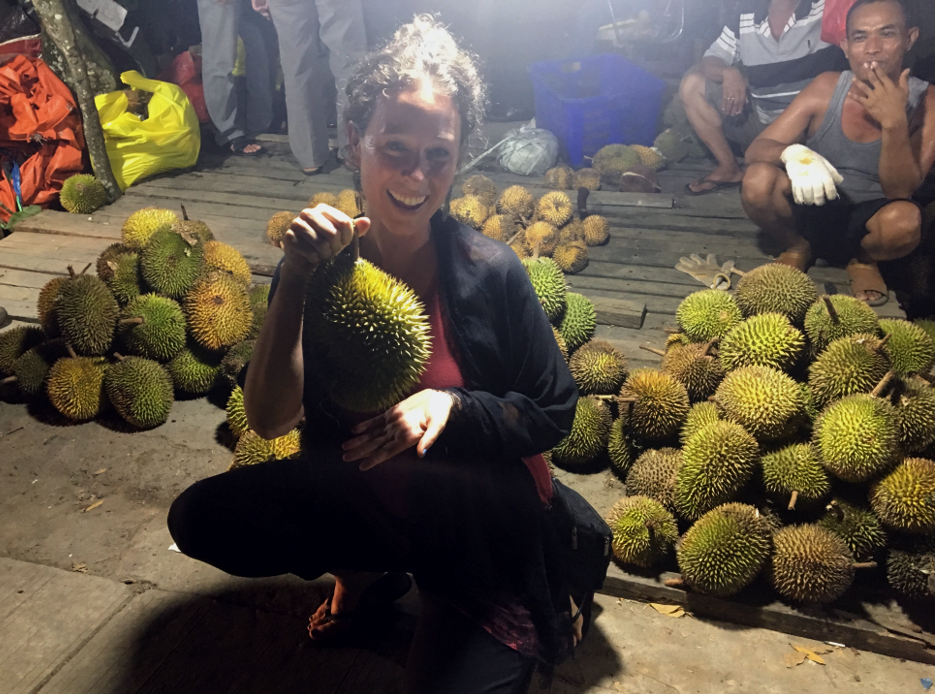CCB in Southeast Asia: Gibbons, bioacoustics, and durian, oh my!
Nothing is more incredible than the sunrise in the Bornean jungle. My main study species — the Bornean gibbon — calls in the early morning hours, with the males often beginning their melancholy solos before dawn. There is a particularly magical time when the nocturnal insects have quieted down for the night but before the start of the dawn chorus when it is almost silent, apart from the intermittent calls of the male gibbon. Both mated and unmated gibbon males engage in early morning solos, but there have been many times when I have seen a single lone gibbon male, hanging in a tree using just one of his incredibly long arms, soloing for an unknown audience. My Malaysian research assistant Zinin and I often comment that it seems ‘dia sunyi,’ or he is lonely. Although we may never know what inspires male gibbons to sing (although we do have some hypotheses), their solos are arguably some of the most beautiful sounds in the Bornean rainforest.
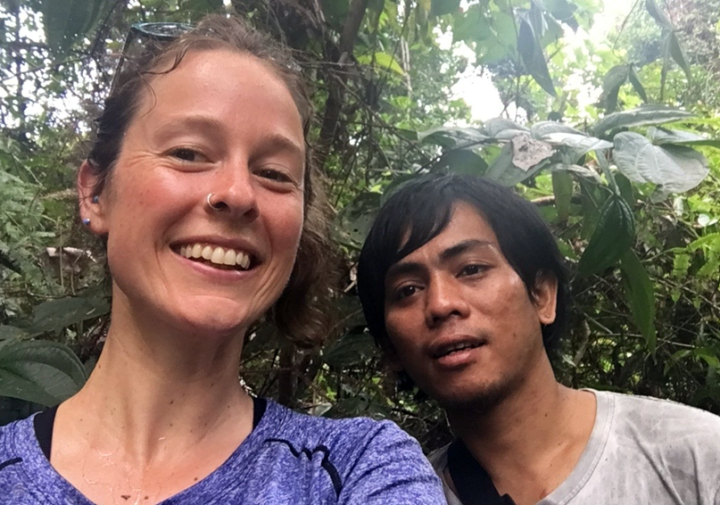
I have been lucky to visit the island of Borneo numerous times since I started my PhD in 2012, and my most recent trip to Borneo was as a postdoctoral scientist with the Center for Conservation Bioacoustics. My first stop was Maliau Basin Conservation Area in the Malaysian state of Sabah. Maliau Basin is known as ‘Sabah’s lost world,’ and there is still a substantial amount of the conservation area that is yet to be explored. My friend that works in Maliau Basin told me that he thinks there is a new species of gibbon at the top of the basin—as they are ‘bigger’ and ‘darker’ than the gibbons in the lower part of the basin—and one of my long-term career goals is to verify this with genetic and acoustic data. But, my research goals for my visit to Maliau Basin this time were a bit more modest than the discovery of a new species.
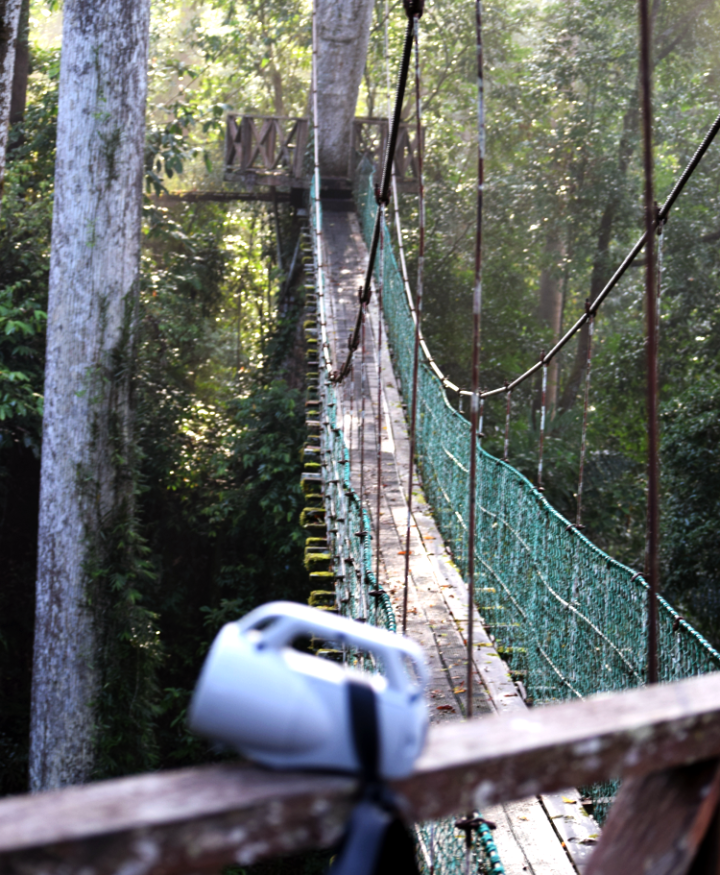
At the Center for Conservation Bioacoustics, one of our major goals is the development of tools and techniques needed to monitor populations of vocal animals across the tropics. But, we presently lack a clear understanding of how sound travels through tropical forest environments. In an attempt to address this gap in our knowledge, I broadcast a series of previously recorded gibbon calls every hour over the course of one week, and re-recorded them using our Swift autonomous recording units, which were set on a line of 100-meter spacing. I was interested to see how recording distance, time of day, and features of gibbon calls themselves influenced how the sounds traveled. I chose this site because it has a canopy walk (pictured below) that is at a height of about 20-meters, which allowed me to broadcast the calls at a height which gibbons would use, without having to climb any trees. I spent so much time on the canopy walk during that week that some of the workers asked ‘kamu tidur disini?’ [if I slept there] (which I didn’t)!
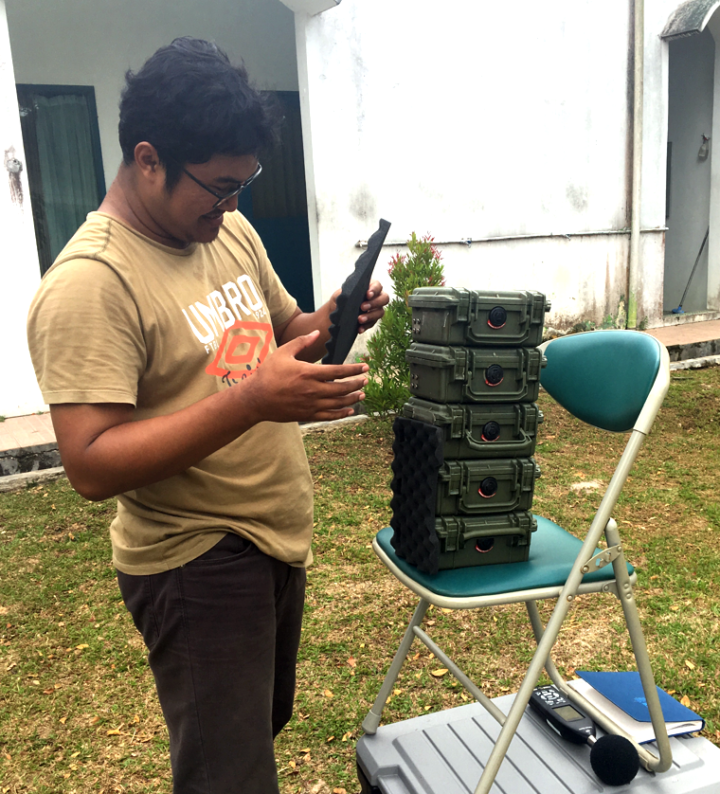
My next stop was East Kalimantan, Indonesia, and to a part of Borneo I had never visited before. I flew into the town of Berau and was amazed at how much forest cover there was. In Sabah, and much of Malaysia, the main view from the plane window is oil palm, which often extends as far as the eye can see. While in Berau, I attended the International Symposium on Tropical Forest and Environmental Science, which was hosted by our Indonesian collaborators Universitas Mulawarman. I was honored to give a keynote talk entitled ‘Acoustic monitoring of vocal Southeast Asian primates and their habitats: recent advances and challenges.’ One of the highlights of my time in Berau was visiting ‘Jalan Durian,’ or “durian street.” As durian has a very strong smell, most people prefer to not eat it in their homes, and there is a whole culture around eating durian where people go to the durian stands, pick out their durian, and have the vendor chop it open with a machete. During my visit to Jalan Durian I discovered that after more than 8 years working on Borneo that I actually like durian, and I also got to spend some quality time with my Indonesian collaborators.
My final stop on Borneo for this trip was also in East Kalimantan, but in the town of Samarinda. My experience as a visiting scientist in Indonesia was amazing, and Universitas Mulawarman (which is based in Samarinda) was a wonderful host. They invited me to give a guest lecture for students at the university, and I was amazed to see when I arrived at the university that they had printed a giant banner with my face on it (see below)! This seems to be very common in Indonesia, as this was actually the third banner I have seen with my face printed on it. In addition to spending time with our collaborators at the university, I also spent a substantial amount of time with Arif, our collaborator from Yayasan Konservasi Alam Nusantara, Indonesia, while I was in Samarinda. Arif and I worked to prepare almost 100 autonomous recorders for deployment in Wehea Protection Forest, East Kalimantan, for a project we are working on to estimate population density of Bornean gibbons using acoustic data. Funding for this project is provided by the David R. Atkinson Center for a Sustainable Future. This work is supported by the Atkinson Center for Sustainable Future, and is a collaboration among The Nature Conservancy (Eddie Game, Arif Rifqi), Cornell Department of Natural Resources (Angela Fuller and Ben Augustine), and the US Geological Survey (Andy Royle).

Dena after her guest lecture at Universitas Mulawarman 
Dena on Jalan Durian.
The incredible jungles and wildlife were what first brought me to the island of Borneo, but my interactions with my local collaborators have been some of the most rewarding aspects of my time there. I feel very lucky to have been able to have these experiences and will continue to work closely with Indonesians and Malaysians to help improve conservation efforts of gibbons and their habitats for years to come.
